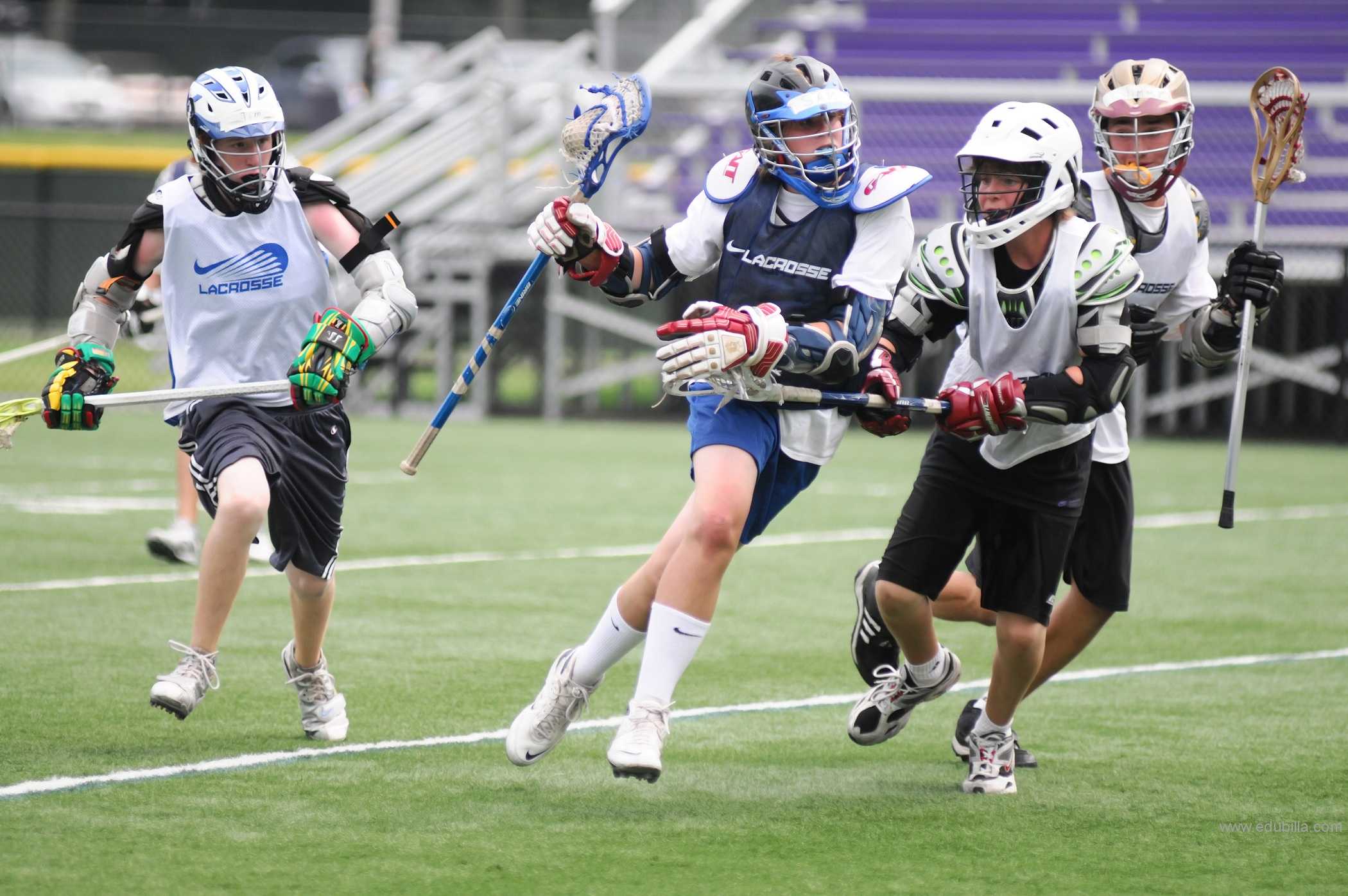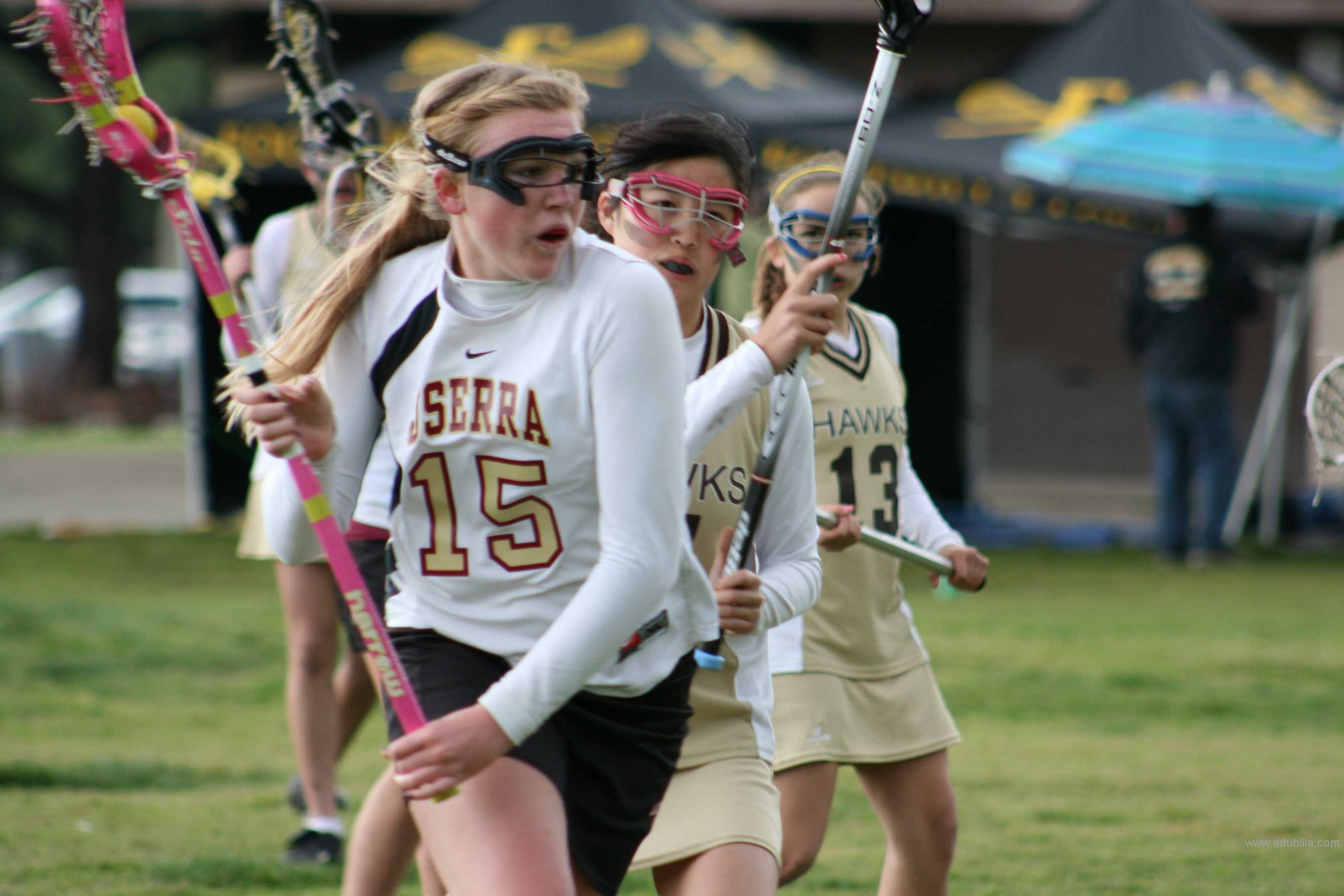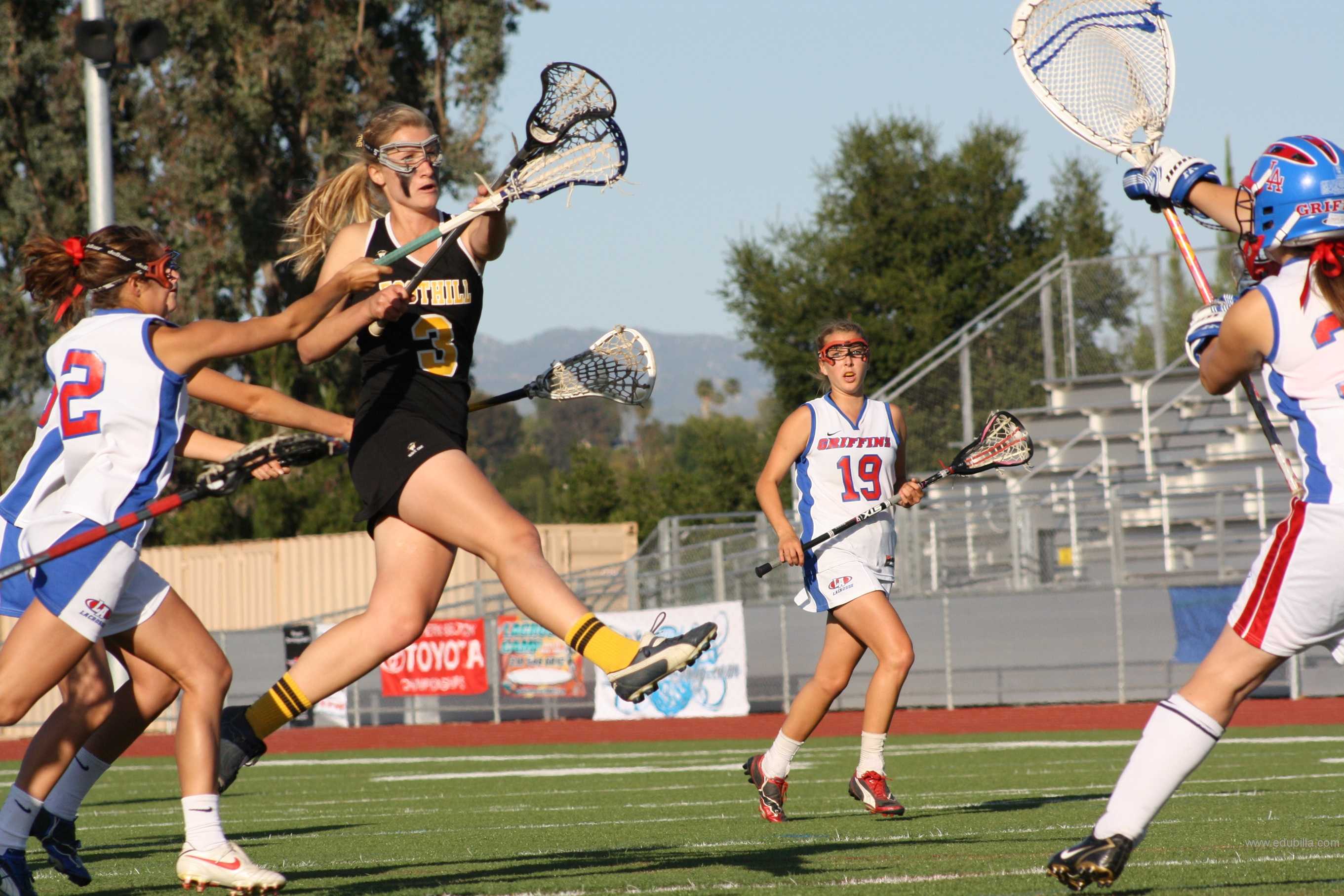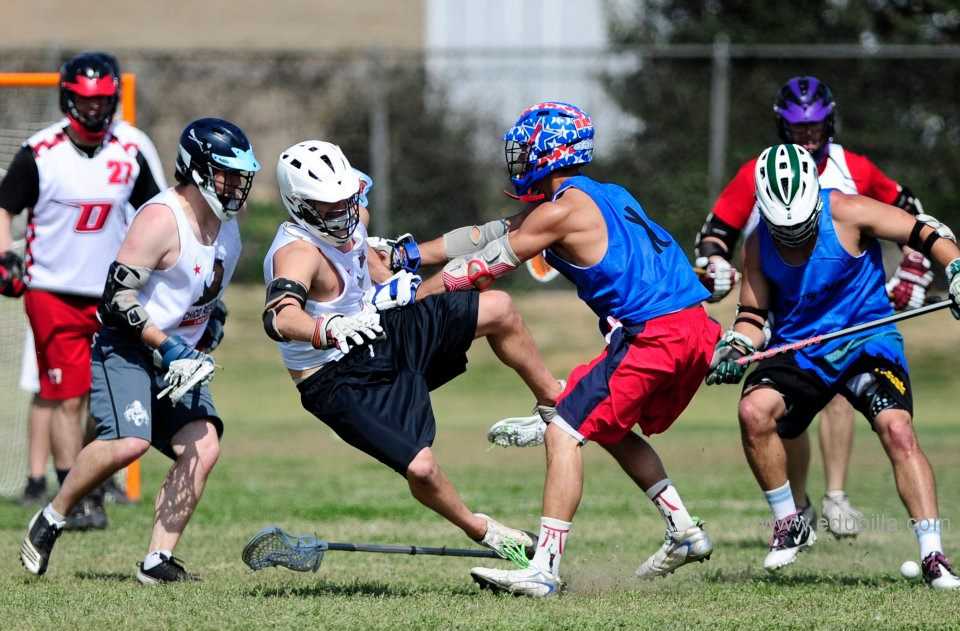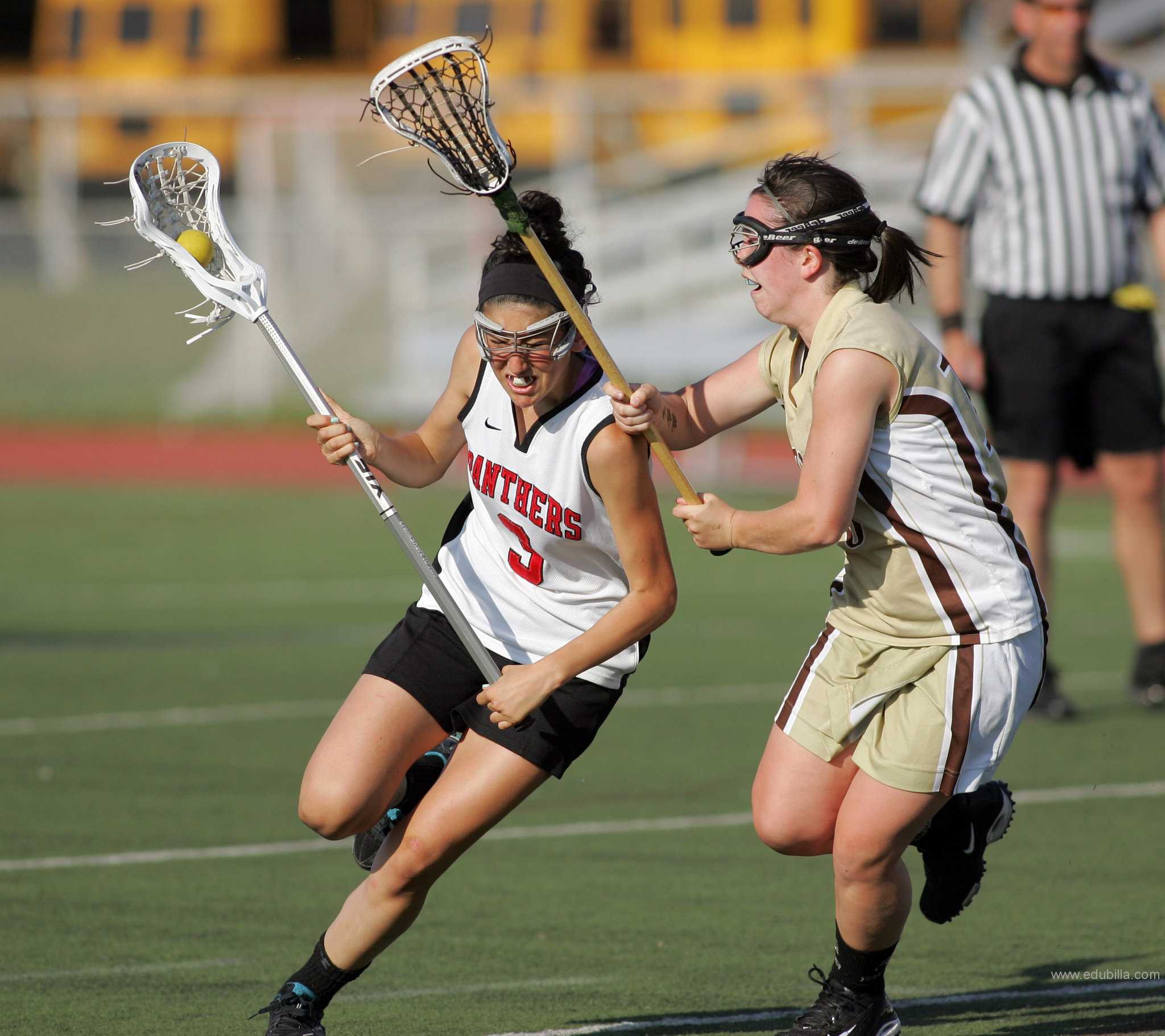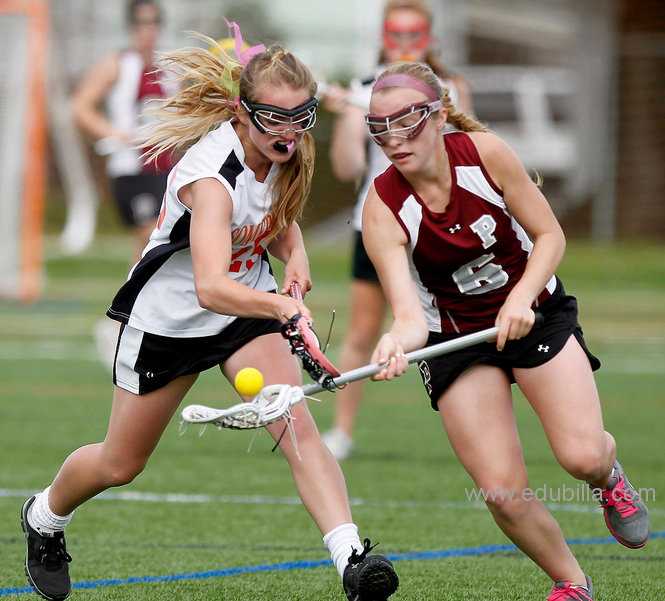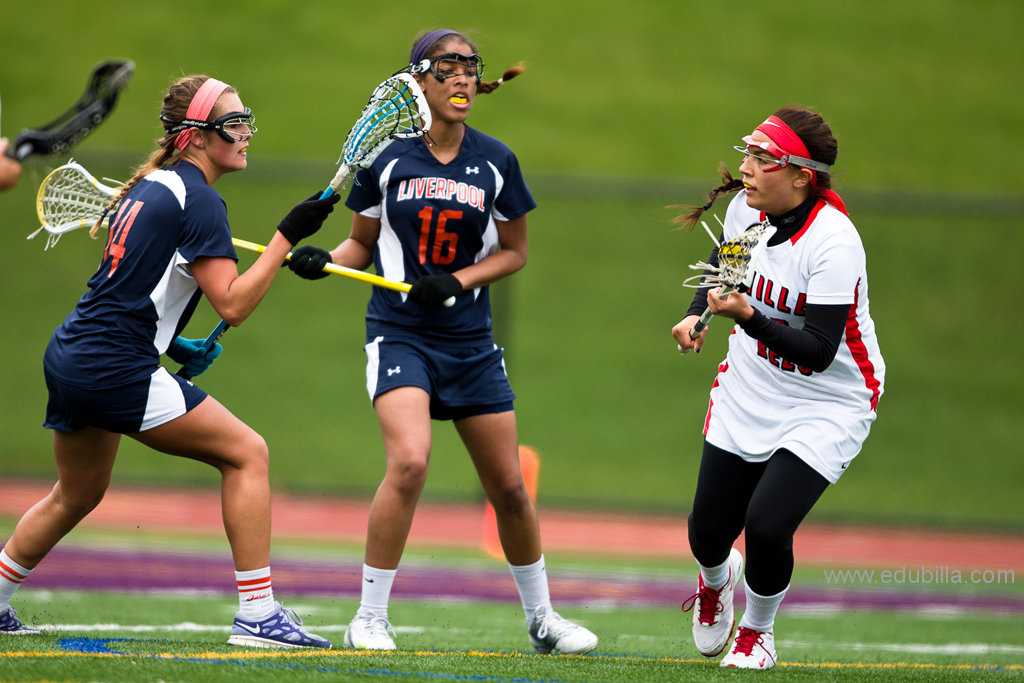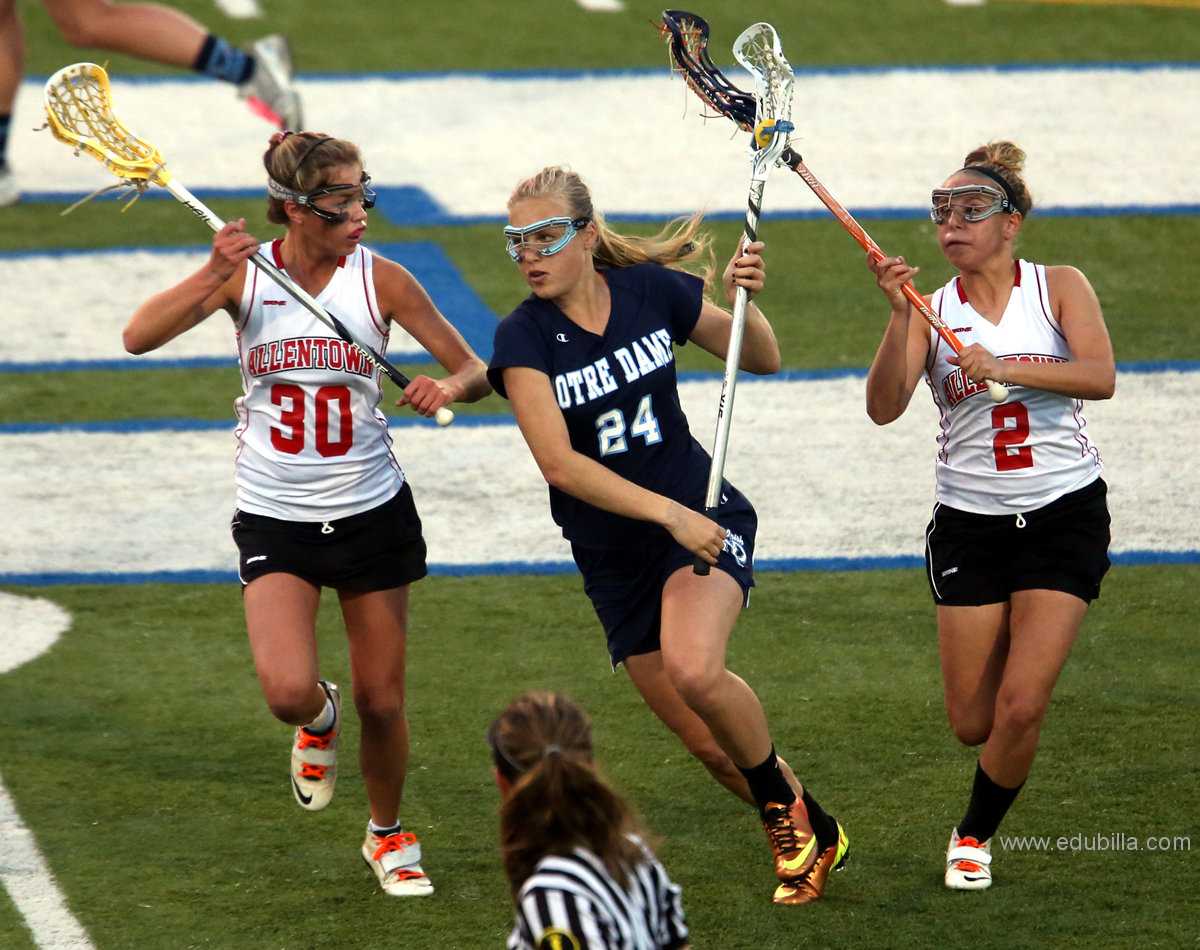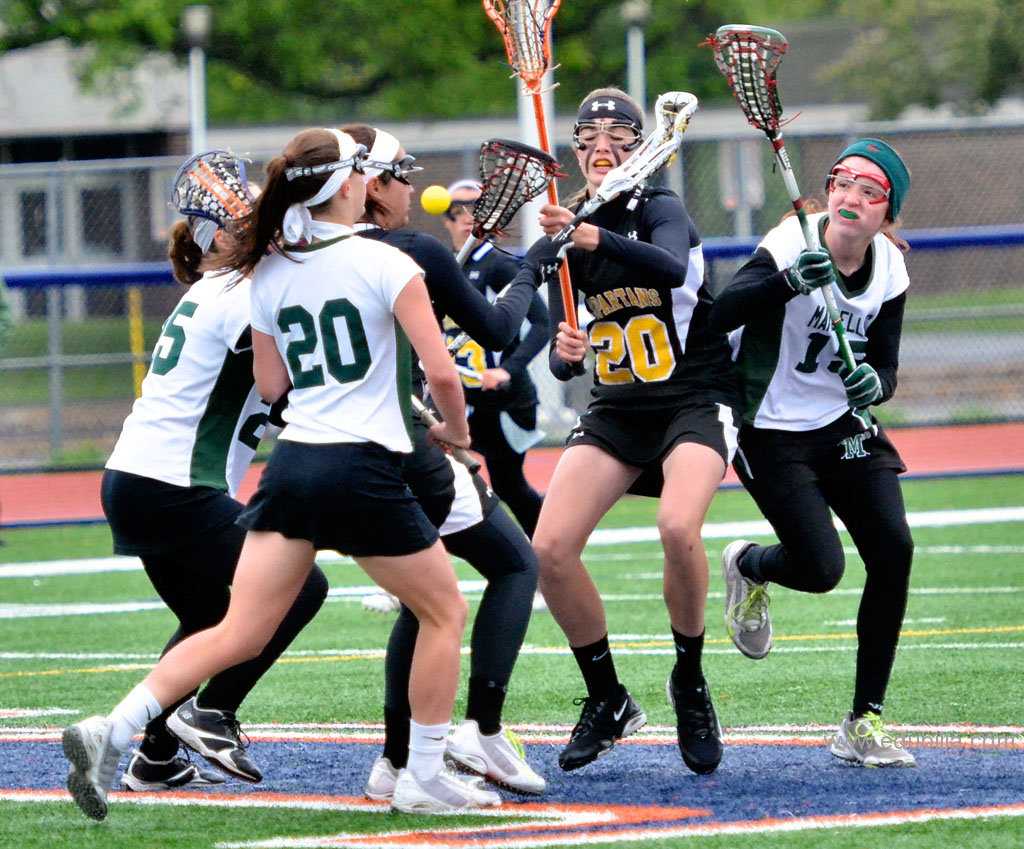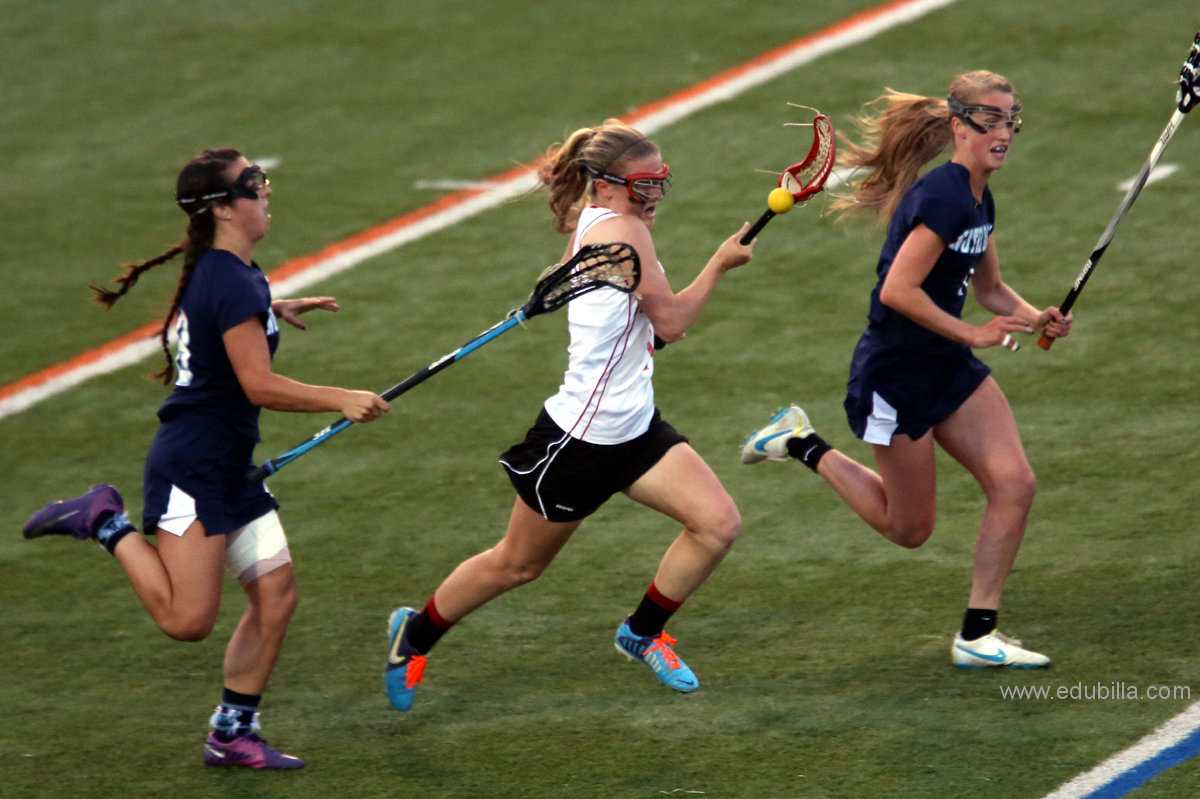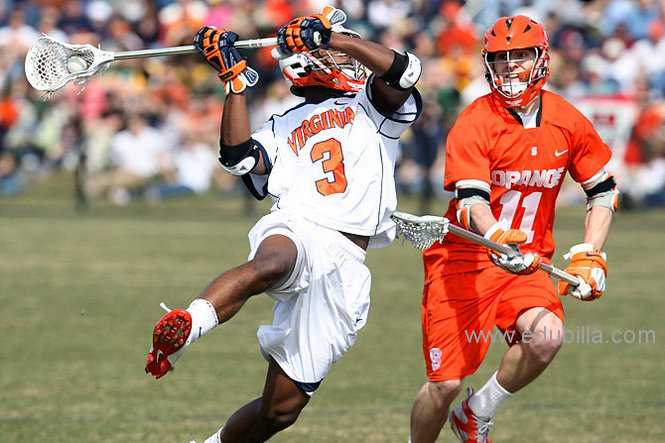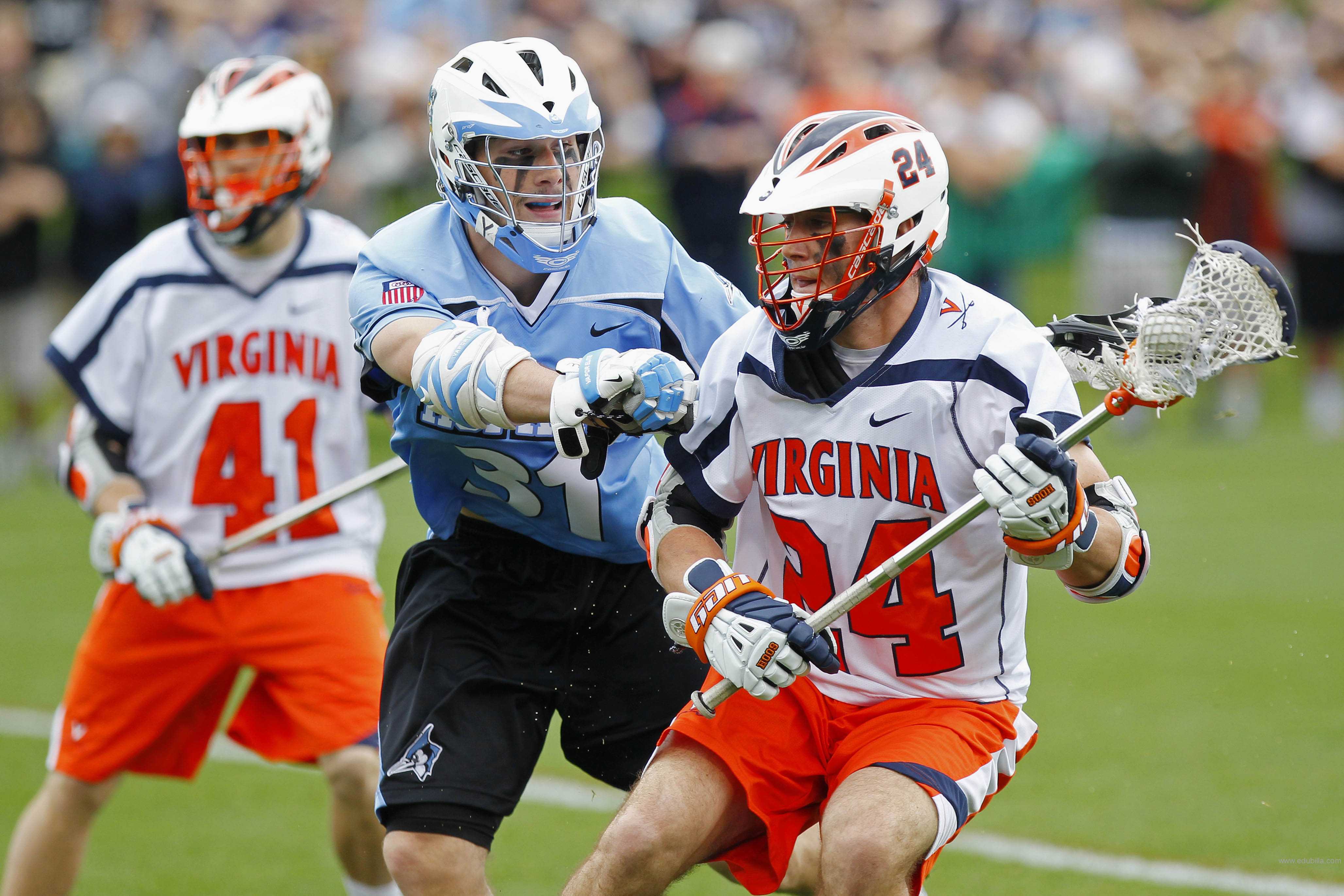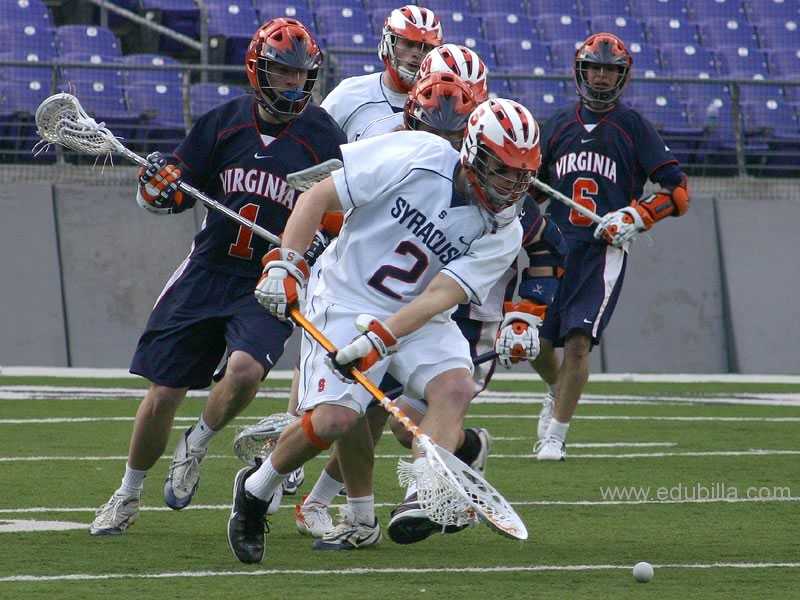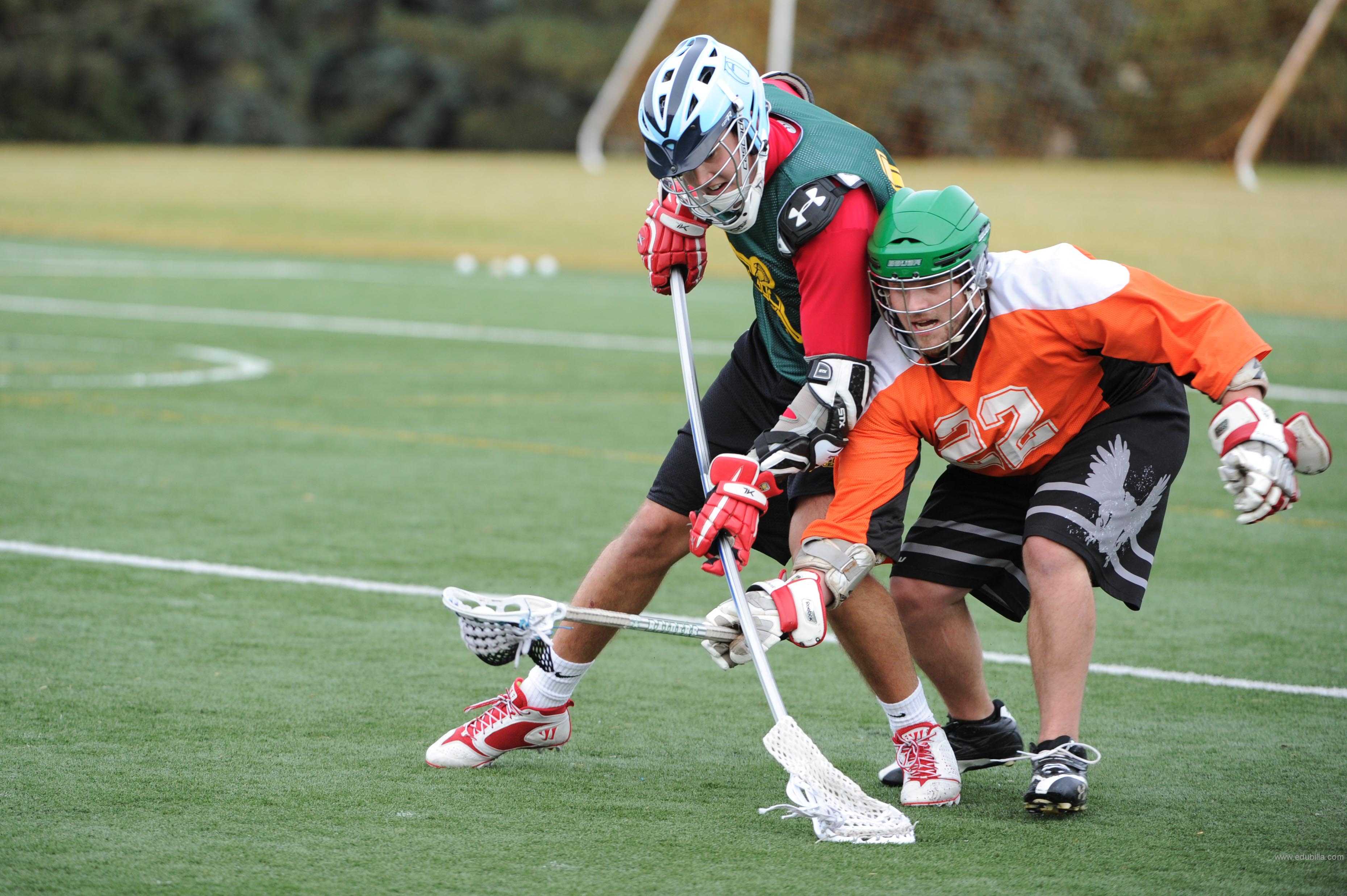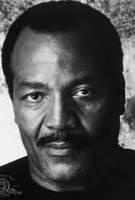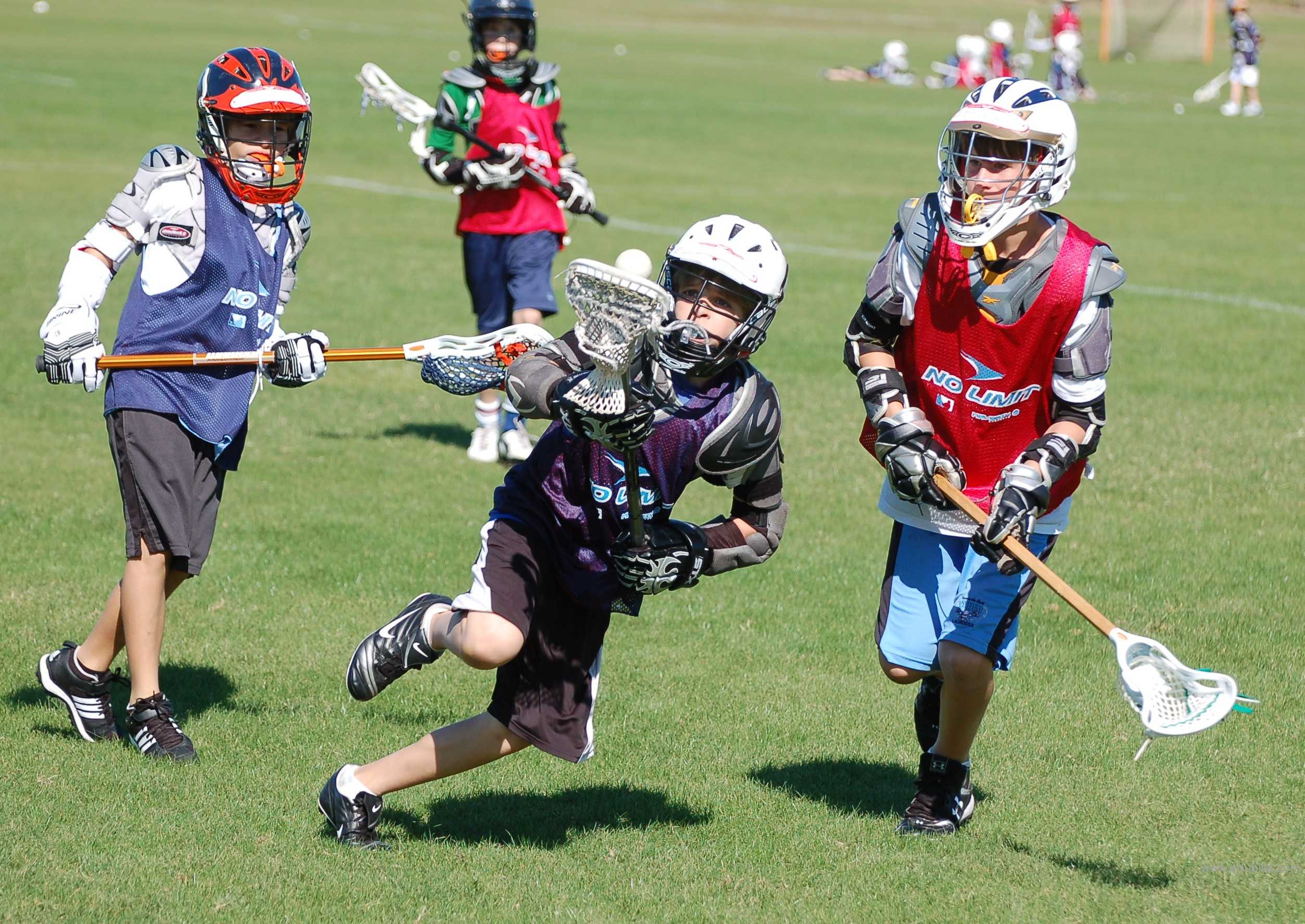
Overview Of Lacrosse
Lacrosse is a team sport of Iroquois origin played using a small rubber ball (62.7mm-64.77mm,140g-147g), and a long-handled stick called a crosse or lacrosse stick. It is often played as a contact sport. The head of the lacrosse stick is strung with loose mesh designed to catch and hold the lacrosse ball. Offensively, the objective of the game is to score by shooting the ball into an opponent's goal, using the lacrosse stick to catch, carry, and pass the ball to do so. Defensively, the objective is to keep the opposing team from scoring and to gain the ball through the use of stick checking and body contact or positioning. The sport has four major types: men's field lacrosse, women's lacrosse, box lacrosse and intercrosse. The sport consists of four positions: midfield, attack, defense, and goalie.
Game Rules
Background
For many years, at least at the international competition level, men’s and women’s lacrosse has been played with different field dimensions and field markings. With many new countries introducing the sport of lacrosse, the FIL, at its General Assembly in June 2012, established a set of common perimeter and bench markings, in the hope of making as many of the field dimensions similar so they are more easily understood, remembered and implemented by lacrosse enthusiasts across the globe.
Benefits:
The benefits in having a common lacrosse field for both men’s and women’s field lacrosse include:
Increased chance of having permanent lines included in synthetic surfaces
Reduced time required to mark both a men’s and women’s field
Less confusion regarding what line is used for what game
Alignment with other field sports where field markings are the same
Fields can be more easily shared by both men’ and women’s teams
Goals can be permanent on grass fields and not have to move for each game
Increasing potential for inclusion of lacrosse in the Olympics
Boys' Rules:
The National Federation of State High School Associations (NFHS) authors rules for high school boys’ lacrosse, and those rules govern youth boys’ lacrosse except where US Lacrosse has amended otherwise. Those amendments are based in part on exhaustive surveys of rules in leagues representing nearly 170,000 youth players and on research and published literature from the US Lacrosse Sports Science and Safety Committee, resulting in the development of age-appropriate playing rules and the annual publication of the “Youth Rules and Best Practices Guidebook for Boys.”
Girls' Rules:
US Lacrosse writes the rules for high school girls’ lacrosse, and those rules are endorsed by the National Federation of State High School Associations (NFHS). Those rules also govern youth girls’ lacrosse except where US Lacrosse has amended otherwise. Those amendments are based in part of exhaustive surveys of rules in leagues representing nearly 170,000 youth players and on research and published literature from the US Lacrosse Sports Science and Safety Committee, resulting in the development of age-appropriate playing rules and the annual publication of the “Youth Rules and Best Practices Guidebook for Girls.”
Men's Rules:
The National Collegiate Athletic Association writes the rules for collegiate varsity men’s lacrosse, and those rules are used by the non-varsity Men’s Collegiate Lacrosse Association. US Lacrosse and the NCAA work together frequently on rule development and player safety. US Lacrosse writes the rules for post-collegiate men’s lacrosse.
Alternative measurements for existing MEN’S facilities FIL has developed a set of measurements for existing MEN’S fields. These are for the following size pitches:
Unified field pitch – 110m x 60m
Field hockey pitch – 91.4m x 55m
Field with 110m but less than 60m
Field with less than 110m x 60m
-Size of field increased from 110 yard X 60 yard to 110 m X 60 m (120.30 yard X 65.62 yard)
-Goal crease radius increased from 3 yard to 3 m (3.28 yard) -Space behind the goal reduced from 15 yard to 12 m (13.12 yard) -Substitution area or gate increased from 10 yard to 13 m (14.22 yard)
-Centre face-off X to wing line and goal line to men’s restraining line remain essentially the same but the measurement has been adjusted to metric.
-Additional field length is added to the centre of the field between the 2 restraining lines and the additional width is added between the wing lines and the sidelines.
Detailed Lacrosse Men's Rules Can Be Downloaded From Documents
Women's Rules:
The National Collegiate Athletic Association writes the rules for collegiate varsity women’s lacrosse, while US Lacrosse writes the rules for collegiate non-varsity (or club) and post-collegiate women’s lacrosse. The organizations work together frequently on rule development and player safety.
-Size of field reduced from 120m x 60m to 110m x 60m
-Restraining line reduced from 27m to 25m
-Space behind goal reduced from 15m to 12m
-Team bench area reduced from 28m to 18.5m
Detailed Lacrosse Women's Rules Can Be Downloaded From Documents
Field Dimensions:
Background:
For many years, at least at the international competition level, men’s and women’s lacrosse has been played with different field dimensions and field markings. With many new countries introducing the sport of lacrosse, the FIL, at its General Assembly in June 2012, established a set of common perimeter and bench markings, in the hope of making as many of the field dimensions similar so they are more easily understood, remembered and implemented by lacrosse enthusiasts across the globe.
Benefits
The benefits in having a common lacrosse field for both men’s and women’s field lacrosse include:
-Increased chance of having permanent lines included in synthetic surfaces
-Reduced time required to mark both a men’s and women’s field
-Less confusion regarding what line is used for what game
-Alignment with other field sports where field markings are the same
-Fields can be more easily shared by both men’ and women’s teams
-Goals can be permanent on grass fields and not have to move for each game
-Increasing potential for inclusion of lacrosse in the Olympics
Summary of changes:
A summary of these changes is as follows, with more detail provided in the attached documents.
Men:
-Size of field increased from 110 yard X 60 yard to 110 m X 60 m (120.30 yard X 65.62 yard)
-Goal crease radius increased from 3 yard to 3 m (3.28 yard)
-Space behind the goal reduced from 15 yard to 12 m (13.12 yard)
-Substitution area or gate increased from 10 yard to 13 m (14.22 yard)
-Centre face-off X to wing line and goal line to men’s restraining line remain essentially the same but the measurement has been adjusted to metric.
-Additional field length is added to the centre of the field between the 2 restraining lines and the additional width is added between the wing lines and the sidelines.
Women:
-Size of field reduced from 120m x 60m to 110m x 60m
-Restraining line reduced from 27m to 25m
-Space behind goal reduced from 15m to 12m
-Team bench area reduced from 28m to 18.5m
Alternative measurements for existing facilities FIL has developed a set of measurements for existing fields. These are for the following size pitches:
-Unified field pitch – 110m x 60m
-Field hockey pitch – 91.4m x 55m
-Field with 110m but less than 60m
-Field with less than 110m x 60m
Detailed Lacrosse Field Dimensions Rules Can Be Downloaded From Documents
Equipments Need For Lacrosse
Equipment for Boys' and Men's Lacrosse
The Crosse:
The crosse (lacrosse stick) is made of wood, laminated wood or synthetic material, with a shaped net pocket at the end. The crosse must be an overall length of 40 - 42 inches for attackmen and midfielders, or 52 - 72 inches for defensemen. The head of the crosse must be 6.5 - 10 inches wide, except a goalie's crosse which may be 10 - 12 inches wide. The pocket of a crosse shall be deemed illegal if the top surface of a lacrosse ball, when placed in the head of the crosse, is below the bottom edge of the side wall.
The Ball:
The ball must be made of solid rubber and can be white, yellow or orange. The ball is 7.75 - 8 inches in circumference and 5 - 5.25 ounces. All lacrosse balls must meet NOCSAE (National Operating Committee on Standards for Athletic Equipment) standards and include the words "Meets NOCSAE Standard".
The Helmet:
A protective helmet, equipped with face mask, chin pad and a cupped four point chin strap fastened to all four hookups, must be worn by all players. All helmets and face masks must be NOCSAE (National Operating Committee on Standards for Athletic Equipment) approved.
The Mouthpiece:
The mouthpiece must be a highly visible color and is mandatory.
The Glove:
All players are required to wear protective gloves. The cutting or altering of gloves is prohibited.
Other Protective Equipment:
All players, with the exception of the goalkeeper, must wear shoulder pads. Arm pads are required and rib pads are strongly recommended, and often required, as are athletic supporters and protective cups for all players.
The goalkeeper is required to wear a throat protector and chest protector, in addition to a helmet, mouthpiece, gloves and a protective cup.
Equipment for Girls' and Women's Lacrosse
The Crosse:
The crosse (lacrosse stick) is made of wood, laminated wood, or synthetic material, with a shaped net pocket at the end. A girl's crosse must be an overall length of 35.5 - 43.25 inches. The head of the crosse must be seven to nine inches wide. The pocket of the stick must be strung traditionally; no mesh is allowed. The top of the ball when dropped in the pocket must remain above the side walls.* The goalkeeper¹s crosse may be 35.5- 48 inches long. The head of the crosse may be mesh and up to 12 inches wide.
* Modified Pocket allowed in girls youth rules
The Ball:
The game ball must be yellow and made of solid rubber, smooth without dimples for games and must be visible color, other than clear or white. The ball must be 7.75 - 8 inches in circumference and weigh 5 - 5.25 ounces. All lacrosse balls must meet NOCSAE (National Operating Committee on Standards for Athletic Equipment) standards and include the words "Meets NOCSAE Standard".
The Mouthpiece:
All players must wear mouthguards.
Protective Equipment:
Close-fitting gloves, nose guards and soft head gear are optional and may be worn by all players. All field players must properly wear eye protection that meets ASTM specification standard F803 for women's adult/ youth lacrosse for the appropriate level of play.
The Goalkeeper's Equipment:
The goalkeeper must wear a helmet with face mask (NOCSAE approved), separate throat protector, padded gloves, mouth piece, and chest protector. The goalkeeper may wear padding on arms, legs, and shoulders which does not excessively increase the size of those body parts. High school level and below must wear padding on thighs and shins. Youth level must wear some form of abdominal and pelvic protection.
Goalies are required to wear padded gloves.
History Of Lacrosse
Lacrosse has its origins in tribal game played by all eastern Woodlands Native Americans and by some Plains Indians tribes in what is now Canada. The game was extensively modified by European immigrants to North America to create its current collegiate and professional form.
Early Original Rules:
-Rules for these games were decided on the day before. Generally there was no out-of-bounds, and the ball could not be touched with the hands. The goals would be selected as large rocks or trees; in later years wooden posts were used. Playing time was often from sun up until sun down.
-The rules were very simple, the ball was not to be touched by a player’s hand and there were no boundaries. The ball was tossed into the air to indicate the start of the game and players raced to be the first to catch it.
-The first game played under Beers' rules was at Upper Canada College in 1867.
International Lacrosse Historical Timeline
1636 – Jesuit Missionary Jean de Brebeuf is the first to document the game of lacrosse.
1794 – A match between the Seneca and Mohawks results in the creating of basic rules.
1834 – Caughnawaga Indians demonstrate the sport in Montreal. The game is reported by the newspaper and, for the first time, white men are interested in the sport.
1867 – Dr. William George Beers, the father of modern lacrosse, finalizes the first set of playing rules for the Montreal Club.
1876 – Queen Victoria watched and “endorses” a lacrosse game in Windsor, England. New York University is the first college in the United States to establish a lacrosse team.
1881 – The first intercollegiate tournament is held at Westchester Polo Grounds in New York.
1890 – The first women’s lacrosse game is played at St. Leonard’s School in St. Andrew’s, Scotland.
1904 – Lacrosse is first played as an actual event in the Olympics in St. Louis, with Canada winning the gold medal.
1908 – Lacrosse is played for the last time as an actual Olympic event in London, and Canada again wins the gold medal.
1913 – Women’s lacrosse expands team size from ten (10) to current level of twelve (12) players.
1926 – Rosabelle Sinclair reestablishes women’s lacrosse in the United States when she starts a team at the Bryn Mawr School in Baltimore.
1937 – Robert Pool introduces the first double-walled wooden stick, an early prototype for today’s plastic sticks.
1947 – The men’s ten (10) field game positions change from goalkeeper, point, cover point, first defense, second defense, center, second attack, first attack and in home to goal keeper, attack, midfield and defense.
1967 – The initial men’s lacrosse world tournament was played in Toronto, Ontario, Canada. It was a four-team invitational tournament that coincided with Canada’s centennial lacrosse celebration in 1967. The Mt. Washington (Md.) Lacrosse Club represented the United States and won the tournament.
1971 – The International Federation of Women’s Lacrosse Association (IFWLA) is founded.
1974 – The International Lacrosse Federation (ILF) was founded for men’s international lacrosse.
1982 – The first IFWLA World Cup is played in Nottingham, England and won by the United States, which defeated Australia 10-7 in Extra Time in the gold medal game.
1988 – The International Lacrosse Federation (ILF) sanctioned the first ever Under-19 World Championship in Adelaide, Australia. The United States defeated Canada 12-5 in that first ILF U-19 World Championship.
1995 – The first Women’s Under-19 World Championship is played in Adelaide, Australia. The Australian women win gold in the inaugural event over the United States, 5-4.
2003 – Canada defeated the Iroquois Nationals 21-4 in the first World Indoor Lacrosse Championship. The event is hosted by Canada and held in Hamilton, Kitchener, Mississauga and Oshawa, Ontario.
2008 – The Federation of International Lacrosse (FIL) is formed through a merger of the men’s (ILF) and women’s (IFWLA) international lacrosse associations. It’s mission is to spread the game of lacrosse throughout the world with its men’s and women’s unified vision focused on lacrosse once again becoming an Olympic sport.
2009-The 2009 Women's World Cup was played in Prague, Czech Republic, won by the United States, and the 2013 World Cup was played in Oshawa, Canada, again won by the United States.The 2009 Women's World Cup was competed for by 16 nations.
2010-The FIL hosted the 2010 World Lacrosse Championship in Manchester, England, between July 15 to 24, 2010
Origin Of Lacrosse
Lacrosse was started by the Native American Indians and was originally known as stickball. The game was initially played in the St. Lawrence Valley area by the Algonquian tribe and they were followed by other tribes in the eastern half of North America, and around the western Great Lakes.
The Native American games were seen as major events, which took place over several days.They were played over huge open areas between villages and the goals, which might be trees or other natural features, were anything from 500 yards to several miles apart. Any number of players were involved. Some estimates have mentioned between 100 and 100,000 players participating in a game at any one time. The rules were very simple, the ball was not to be touched by a player’s hand and there were no boundaries. The ball was tossed into the air to indicate the start of the game and players raced to be the first to catch it.
wooden balls:
The original wooden balls were later replaced by deerskin balls filled with fur and the sticks developed over time to become more sophisticated implements, the netting made from deer sinews. In preparation for a game players used paint and charcoal to decorate their faces and bodies.
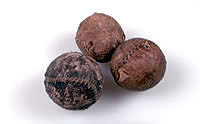
Games of lacrosse were played for a number of reasons. It was considered a sport that toughened up young warriors for war but it was also a game played for recreation and for religious reasons. It was not unusual for bets to be placed on the outcome of games.
Jean de Brébeuf:
French Jesuit missionaries working in the St. Lawrence Valley in the 1630s were the first Europeans to see lacrosse being played by the Native American Indians. One of them, Jean de Brébeuf, wrote about the game being played by the Huron Indians in 1636 and it was he who the named the game “lacrosse”.

A demonstration of lacrosse was given by the Caughnawaga Indians in Montreal in 1834.
As a result, interest in the game of lacrosse began to develop in Canada. A Canadian dentist, Dr William George Beers, was responsible for founding the Montreal Lacrosse Club in 1856 and a decade later he drew up rules which included reducing the number of players, introducing a rubber ball and a redesigned stick.
Canada’s National Game:
By 1860 lacrosse had become Canada’s national game and in 1867 exhibition games were played in England. In 1876 Queen Victoria watched a game being played and remarked that “The game is very pretty to watch.”
In 1883 a touring team from Canada and and a team made up of Iroquois natives visited Scotland.
During this tour promotional literature was distributed to the spectators pointing out the benefits of emigration to Canada.
By the turn of the century lacrosse was becoming more popular in several countries and in 1904 and 1908 lacrosse was played in the Summer Olympics.
Women’s Lacrosse:
St. Leonards School, in St Andrews, Scotland claims to be the first girls’ school to have played lacrosse in 1890. The first Headmistress, Miss Lumsden, watched a game played in Canada, in 1884, between the Canghuwaya Indians and the Montreal Club, in Montreal and thought it “beautiful and graceful.” As a result the game was introduced at the school.
1890 St. Leonards Women’s Lacrosse Team
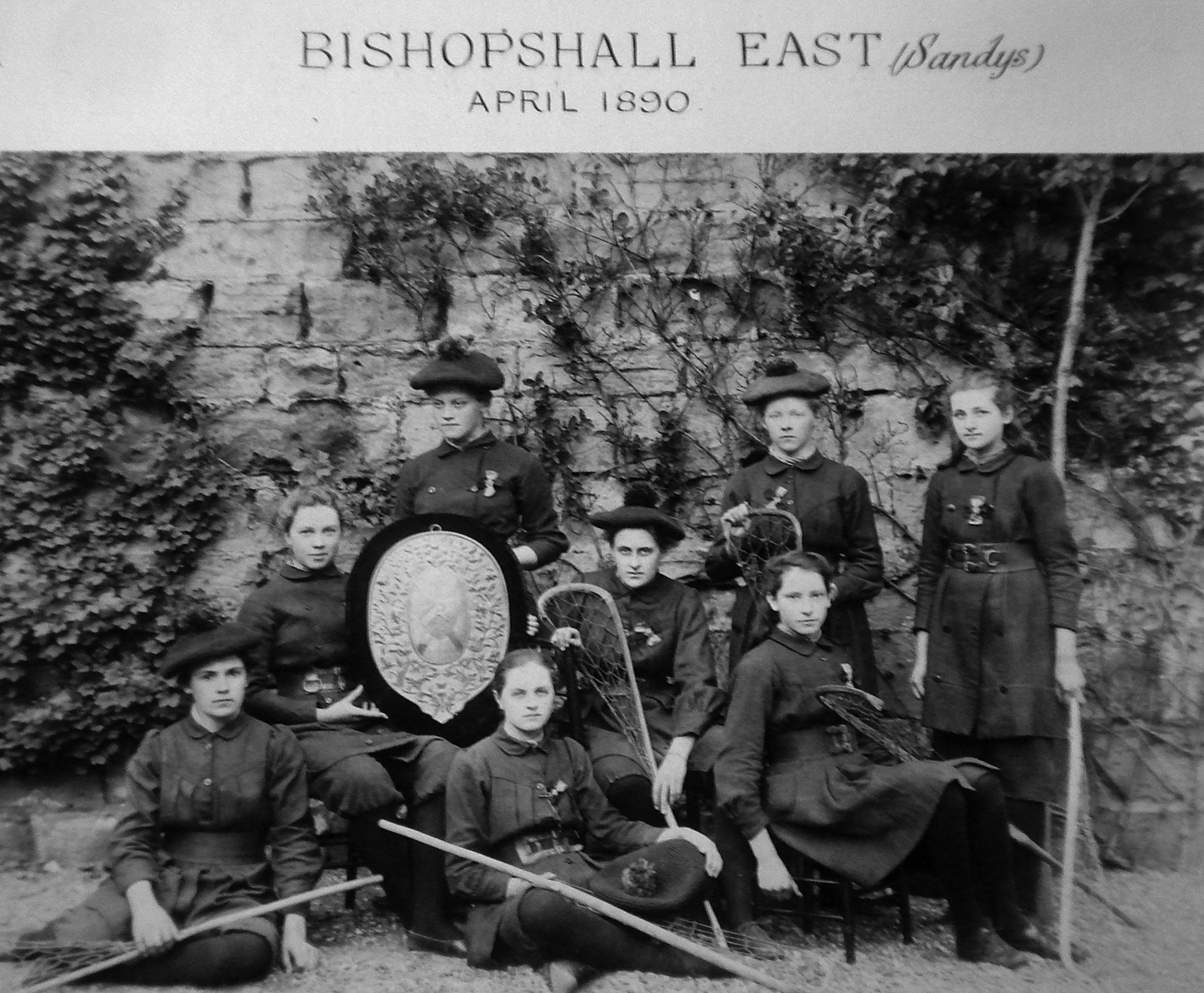
A girl, writing in student magazine, reported details of the very first lacrosse match at St. Leonards on March 27th 1890: “After our crosses having undergone a severe inspection i.e. our referee holding them up one by one and squinting with one eye to see if that which ought to be plane surface was not a curved one. Our referee said it was time to begin, but, owing to the absence of the ball it was rather difficult for the order to be carried out. However, the ball was duly found & after ’123 Play’ had been called, a vigorous game began.”
First Game:
An official account of this first game indicated: “Whether the game on the whole has proved successful may be doubted, but at least we advanced so far in its mysteries as to get a good and exciting game in the matches. They were played in the field with teams of eight, and they lasted one hour, not including a ten minutes’ interval in the middle, after which goals were changed.”
The number of players increased to ten in 1895 and by 1913 there were twelve players, known by the positions in use today. The players used long sticks with short handles.
St Leonards-1900:
Seniors (alumni) of St Leonards introduced lacrosse to schools in the south of England, specifically Wycombe Abbey School in 1896 and Roedean School in 1902.
Bedford Physical Training College and Madame Bergman Österberg’s College of Physical Education in England added lacrosse to their programs in 1903/04 with the help of some of their students who had played at school. Trained teachers then introduced the game into their schools.
First Club:
Initially lacrosse was a school based game and clubs followed later. The first club to be founded was the Southern Ladies Club in England in 1905.
Ladies Lacrosse Association:
The Ladies Lacrosse Association was founded in England in 1912 and international matches began in the following year. The “Standard” newspaper, dated April 18th 1913, stated that “in the very first international lacrosse match, held at Richmond, Scotland beat Wales 11 goals to 2.”
The Scottish Ladies Lacrosse Association was founded in 1920 and at that stage international matches with England were placed on an official footing. Wales and then Ireland founded their organisations in 1930.
Rosabelle Sinclair, an alumnus of St Leonards and a former Scottish lacrosse player, was instrumental in establishing the game of lacrosse for women in the United States.
Seventeenth Century:
Lacrosse, today a marginally popular team sport in North America, may have developed as early as 1100 AD among indigenous peoples on the continent.By the seventeenth century, it was well-established. It was documented by Jesuit missionary priests in the territory of present-day Canada. The game has undergone many modifications since that time.
In the traditional aboriginal Canadian version, each team consisted of about 100 to 1,000 men on a field that stretched from about 500 meters to 3 kilometers long.These lacrosse games lasted from sunup to sundown for two to three days straight. These games were played as part of ceremonial ritual, a kind of symbolic warfare, to give thanks to the Creator or Master.
James Smith:
James Smith described in some detail a game being played in 1757 by his fellow tribe members "wherein they used a wooden ball, about three inches diameter, and the instrument they moved it with was a strong staff about five feet long, with a hoop net on the end of it, large enough to contain the ball."
First World Lacrosse Tournament:
Despite earlier attempts by other enthusiasts, it was not until Rosabelle started a girls’ high school team in 1926, at Bryn Mawr School, in Baltimore, that lacrosse became popular in other nearby schools. The United States formed their organisation, the USWLA, in 1931.
Lacrosse was played by women in Victoria, Australia, in 1936 but it was not until 1962 that they founded their national organisation, the Australian Women’s Lacrosse Council. Canada selected an international team in 1982 to take part in the first World Lacrosse Tournament which took place in Nottingham, England.
Governing Bodies
Federation of International Lacrosse:
The Federation of International Lacrosse, shortened to FIL, was established in August 2008 by a merger of both the men's and women's international lacrosse associations.[1] Its headquarters are located in Wilmington, Delaware in United States. The new organization is responsible for the men's World Lacrosse Championship, World Indoor Lacrosse Champions is the only international sport organization to recognize a First Nations/Native American tribe at the national level; the Iroquois Nationals represent the Iroquois Confederacy that spans New York, Ontario, Quebec and Pennsylvania.
Predecessor organizations:
International Lacrosse Federation:
The International Lacrosse Federation was founded in 1974 to promote and develop the game of men's lacrosse throughout the world. As of 2007, the international governing bodies for men's and women's lacrosse were separate, which was one of the obstacles of lacrosse one day becoming an Olympic sport. In August 2008, the ILF and the International Federation of Women's Lacrosse Associations (IFWLA) merged to become the Federation of International Lacrosse (FIL).
The ILF conducted the World Lacrosse Championship, World Indoor Lacrosse Championship and Under-19 Men's World Lacrosse Championship, all of which will be taken over by the new FIL.
International Federation of Women's Lacrosse Associations:
The International Federation of Women's Lacrosse Associations (IFWLA) was formed in 1972 to promote and develop the game of women's lacrosse throughout the world. It wound up its affairs in August 2008 when it agreed to merge with the International Lacrosse Federation (ILF), the former governing body for men's lacrosse, to form the Federation of International Lacrosse (FIL).
At the time of the merger, IFWLA was attempting to increase interest in women's lacrosse in South America. Promoting all levels of lacrosse included the IFWLA sponsorship of the World Cup and the Under 19 World Championship Tournaments, sponsorships that will be taken over by the FIL.
To Visit FIL Click Here.
Awards Related To Lacrosse
Tewaaraton Trophy:
The bronze Tewaaraton Trophy featuring a Mohawk native was designed and created by Frederick Kail. Spanning four decades, Mr. Kail has distinguished himself as an accomplished sports sculptor and pre-eminent lacrosse sculptor. With this timeless work of art, he captures the exciting spirit and powerful dynamics of lacrosse with meticulous attention to accurate detail. His depiction of a single unnamed Mohawk player, dramatically surging to the front, profoundly portrays the competitive human spirit and superior athletic ability required to win this award.
Adorned simply in a loincloth and golden eagle feather, the 12-inch figure is foundry-cast in a rich patinaed bronze. It is mounted upon a hexagon-shaped slab of black granite and handcrafted, highly polished exotic Cocobolo wood. The hexagonal base symbolizes the Six Nations of the Iroquois Confederacy: The Mohawk, Cayuga, Oneida, Onondaga, Seneca and Tuscarora tribes. With some minor decorative exceptions, the stick is a replica of a pre-1845 Cayuga stick belonging to the grandfather of Alexander T. General of the six Nations Reserve in Ontario. The stick was actually an original predecessor of the modern day stick. To assist with the historical authenticity, Thomas Vennum, Jr. the renowned Native American lacrosse historian, and author of “American Indian Lacrosse: Little Brother of War,” served as consultant to Kail through the development stage of the Trophy.
The original castings are part of the permanent collection and are currently on display at the University Club of Washington, DC and the National Lacrosse Hall of Fame in Baltimore, Maryland. Bronze replications of this magnificent trophy are awarded annually to the “Most Outstanding” female and male varsity collegiate lacrosse player in the United States.
Wingate Memorial Trophy:
The Wingate Memorial Trophy was the award given to the national champion in men's college lacrosse prior to the inception of an NCAA tournament format in 1971. In 1936, the family of W. Wilson Wingate presented a memorial trophy named for him to be presented to the USILA champion. Wingate was a sportswriter for Baltimore newspapers who had played lacrosse in college and often covered the sport. He's credited with nicknaming lacrosse "the fastest game on two feet."[1]
Currently, the NCAA Men's Lacrosse Championship tournament annually determines the top lacrosse team in the NCAA's Division I, Division II, and Division III. Prior to the NCAA era, the national champion was selected by committee, except in 1881. The first intercollegiate lacrosse tournament was held in 1881 with Harvard beating Princeton 3-0 in the championship game. From this point through 1970, the United States Intercollegiate Lacrosse Association and the collegiate lacrosse associations from which it evolved chose the annual champions based on season records. These associations were the ILA (1882-1905), IULL (1894-1905), USILL (1906-1925) and USILA (1926-1970).[2][3]
From 1936-1972 the Wingate Memorial Trophy was presented to the champions each year. The NCAA held its first national tournament in 1971. The Wingate Memorial Trophy was presented to the first two NCAA champions in 1971 and 1972 and was then retired.
USILA Position Players of the Year:
-Outstanding Midfielder Award
-Long Pole Midfielder Award
-Outstanding Attackman
-Specialty Player
-Short Stick Specialist
-Face-Off Specialist
-Outstanding Goalie
-Outstanding Player of the Year
-Outstanding Defenive Player
Howdy Myers Man of the Year Award:
The Howdy Myers Man of the Year Award is presented in honor of one of the sport's most outstanding coaches. Howdy Myers coached 17 championship teams at St. Paul's, Johns Hopkins, and Hofstra. Myers was elected to the Lacrosse Hall of Fame in 1971. The nominee for this award should have contributed to the game of lacrosse in a capacity over and above the normal efforts and in so doing, has shown unselfish and untiring devotion to the game.
Major League Lacrosse Defensive Player of the Year Award:
Warrior Major League Lacrosse Defensive Player of the Year Award is given annually to the individual judged to be, from amongst all MLL players, the best all-around defensively across a given season. Brodie Merrill has largely dominated this award, winning it a record six consecutive times.
National Lacrosse League Defensive Player of the Year Award:
The Defensive Player of the Year Award is given annually to the National Lacrosse League player (not goaltenders) who is chosen as the best defensive player.
National Lacrosse League Transition Player of the Year Award:
The Transition Player of the Year Award is given annually to the National Lacrosse League player who is chosen as the best transition player. This award debuted after the 2007 NLL season.
Lacrosse,Federation of International Lacrosse,FIL,Lacrosse History,Lacrosse Rules,Lacrosse Awards
Sample Documents Of Lacrosse
-Andre Agassi

